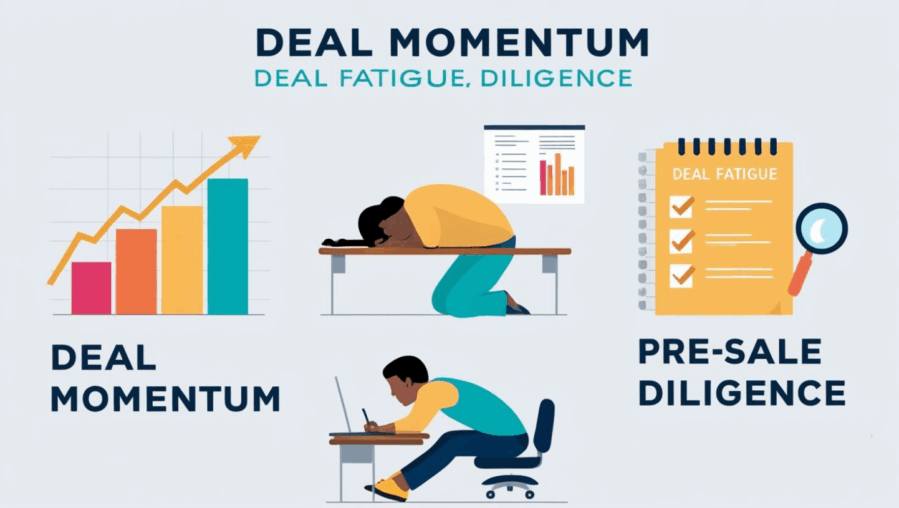 A common area of confusion among both business owners and advisors is the difference between a “Main Street” business, a “Middle Market” business, and a “Mom and Pop” business.
A common area of confusion among both business owners and advisors is the difference between a “Main Street” business, a “Middle Market” business, and a “Mom and Pop” business.
Main Street Businesses
The International Business Brokers’ Association and other professional intermediary organizations define “Main Street” as any company with a Fair Market Value of less than $3,000,000. That is about the upper limit of a business that can be purchased by an individual using “normal” 20% down financing. He or she is acquiring for the purpose of earning a living.
Main Street businesses typically calculate cash flow as Seller’s Discretionary Earnings (SDE). As discussed by Scott Gabehart, the creator of BizEquity valuation software, SDE is a better measure of a business’s return on owner labor, rather than return on investment. SDE includes the benefits of ownership including salary, employer taxes, distributions, health insurance, vehicle, and other perks of ownership. It also includes non-cash tax deductions such as depreciation.
The average selling price for an owner-operated business in the United States is 2.3 times its SDE. That cash flow has to support any debt as well as provide a living for the principal operator.
If we extrapolate from the average multiple (which from my past experience as a business broker is accurate,) we would say that “Main Street” encompasses businesses that produce up to $1.3 million in cash flow. That number is actually pretty high and crosses the threshold of where Private Equity companies typically seek acquisitions. At that level, a buyer would have to have $600,000 for a down payment and about $25,000 a month for debt service.
In reality, companies that generate more than $500,000 a year in adjusted EBITDA cash flow (not counting owner compensation) are more commonly sold for multiples of EBITDA. At that size, a multiple of four times adjusted cash flow is pretty common, and would classify a company with up to about $750,000 in adjusted cash flow as “Main Street.”
Mom and Pop Businesses
There is no definition of what is too small to be considered “Main Street,” but I like the description used by Doug Tatum, author of No Man’s Land: Where Growing Companies Fail. Doug says that many entrepreneurs start a company to build wealth. They do all the jobs in the business and grow it by dint of their unflagging effort and willingness to work long hours. Eventually, they are earning an income that is three times what they could have made just holding down a job.
Unfortunately, they are earning that income by doing the work of three people. That is my definition of a “Mom and Pop” company. The owner is making a living, but the only way to improve that living is by further denigrating his or her lifestyle.
A local distribution business may have $10,000,000 in revenue, but operate with a half dozen employees and the owners. Their profit before taxes could be as little as $200,000 – putting this $10 million business squarely in the category of “Mom and Pop.”
Mom and Pop business owners are seldom candidates for exit planning. When they stop working, the business ceases to exist. Their best hope is usually to pass it to a family member or employee who is also willing to work really hard to earn a decent living. There is seldom enough free cash flow to support much in the way of debt for the purchase of the company.
Middle-Market Businesses
Middle-Market businesses are defined by investment bankers as having revenues between $100 million and $3 billion with less than 2,000 employees. The US Department of Commerce lists the parameters as between $10 million and $250 million in revenue. One accounting association says the “lower middle market” is classified as companies between $5 million and $100 million. Investopedia.com pegs it as $10 million to $1 billion. Divestopedia.com goes with $5 million to $500 million. TheStreet.com has the widest range at $5 million to $1 billion.
Of course, a $5 million revenue company could easily have less than $500,000 in pre-tax earnings, which would put it squarely in the Main Street category. On the other hand, a substantial number of software and Internet-based companies have become “unicorns” (over $1 billion in market valuation) with far less than $100 million in revenue.
This discussion illustrates two points. First, few people know exactly what they are referring to when they say “Main Street” or “Middle-Market.” They have their own idea and definition, which is fine. Unfortunately, it is unlikely that the person they are talking to has the same definition.
Second, inexperienced advisors may say they “don’t work with Main Street.” Many Main Street business owners are excellent candidates for exit planning. In fact, when the $3,000,000 fair market value yardstick is specified, two-thirds of exit planning professionals say that half or more of their clients are in that category(1).
The Business Owner’s Perspective
Why should any of this matter to a business owner? There are two areas where these definitions play an important role in your exit planning.
First, when you look for an intermediary to help you sell, understanding the market they serve is critical. Most business brokers will list a Mom and Pop business, and sell those to downsized corporate executives or others seeking to earn a living. They also handle Main Street listings, although those with over a million dollars in earnings are probably out of reach for 90% of their buyers. You should carefully look at their track record in selling businesses of that size.
Most business brokers will also say that they can handle lower middle-market companies. As we’ve seen, that covers an extremely wide range of revenues and earnings. Again, if you are in the range of profitability that would attract a corporate or financial acquirer, you are likely better off retaining an investment banking firm for the sale.
(1) 2022 National Exit Planners Survey – www.exitplannerssurvey.com
John F. Dini develops transition and succession strategies that allow business owners to exit their companies on their own schedule, with the proceeds they seek and complete control over the process. He takes a coaching approach to client engagements, focusing on helping owners of companies with $1M to $250M in revenue achieve both their desired lifestyles and legacies.

